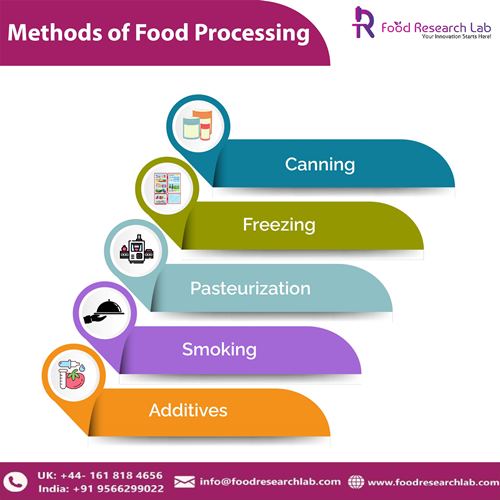
Methods of Food Processing
Canning
The dish has been cooked at a high temperature. Pasteurization is the term for this process. The food is then packaged and kept in an airtight can.
Under anaerobic circumstances, bacteria, yeasts, and other microorganisms break down carbohydrates, and this means that no oxygen is required for the process to occur (apart from oxygen present in sugar). Fermentation is commonly utilized in creating alcoholic drinks such as wine, beer, and cider, as well as preserving foods like sauerkraut, dry sausages, and yoghurt, as well as raising dough in the baking process.
Freezing
To minimize the activity of dangerous bacteria, food temperatures are decreased to below 0°C. The method can be used to preserve a wide range of items, including fruits, vegetables, meat, fish, and ready-to-eat dishes.
A protective gas mix, often comprising oxygen, carbon dioxide, and nitrogen – gases found in humans’ air – replaces the air within a package. They aid in preserving fresh foods such as fruits, vegetables, meat and meat products, and seafood.
Pasteurization
To kill microbes, food is heated and then immediately chilled. Raw milk, for example, could contain hazardous bacteria that cause food poisoning.
Smoking
It treats food with heat and chemicals to help preserve it by exposing it to smoke from burning materials like wood. Meat, sausages, fish, and cheese are all smoked foods.
Additives
The freshness, safety, flavour, appearance, and texture of processed meals are all enhanced by using food additives. Food additives are used for specific goals, such as ensuring food safety or maintaining food quality during a product’s shelf life.






